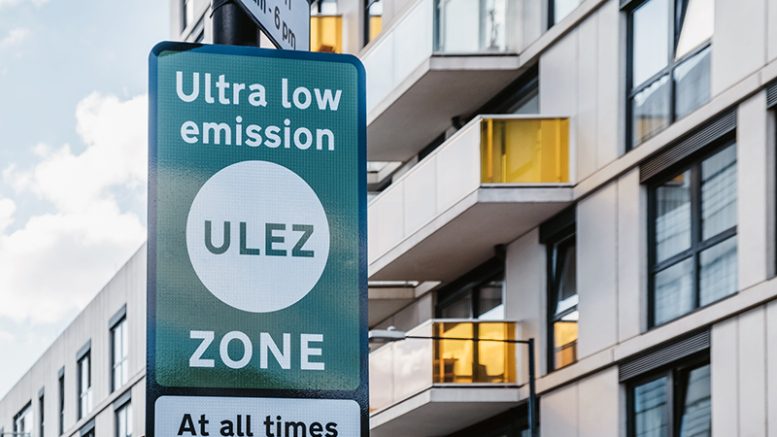The expansion of London’s Ultra Low Emission Zone (ULEZ) may have improved the capital’s air quality, but it appears to have had a negative impact on house prices in affected boroughs. New research from London estate and lettings agent Benham and Reeves reveals that property price growth in ULEZ zones has consistently lagged behind the wider London market since the scheme was introduced.
House prices stagnating in original ULEZ boroughs
The ULEZ was first introduced in April 2019, initially covering the boroughs of Camden, Westminster, Lambeth, Southwark, Islington, Hackney, and the City of London. In the year following its implementation, the average house price across London increased by 1.4%. Surprisingly, property prices in these original ULEZ boroughs outperformed the market during that initial period, rising by an average of 5.9%.
However, the longer-term picture has been less encouraging for homeowners in these areas. Since the original ULEZ launch, average house price growth across London has reached 9.2%. In contrast, prices in the seven original ULEZ boroughs have only increased by 5.9% over the same period - underperforming the broader market.
Marc von Grundherr, Director at Benham and Reeves, believes the initial growth in ULEZ boroughs may have been a temporary response. “The evidence suggests the Ultra Low Emissions Zone has had a very positive impact on the capital’s air quality, and this is certainly a positive,” he said. “However, its implementation and expansion have been met with a great deal of controversy, particularly by London homeowners who feel they have been financially penalised for living within the capital.”
Expansion phases linked to house price decline
The negative impact on house prices became more apparent following the first expansion of ULEZ in October 2021. This phase extended the zone to cover Hammersmith and Fulham, Haringey, Kensington and Chelsea, Lewisham, Newham, Tower Hamlets, Wandsworth, and Waltham Forest.
In the 12 months after this expansion, house prices in these boroughs increased by just 3.8%, compared to a 6.4% rise across London as a whole.
But the bigger hit came after 2021. Since then, the London housing market has slowed, with prices increasing by just 1.7% across the capital. However, in the eight boroughs impacted by the 2021 ULEZ expansion, house prices have fallen by an average of 3.6%.
“The data clearly shows that property market performance in ULEZ boroughs has been weaker than the wider market since the scheme’s expansion,” von Grundherr said. “It hasn’t been a predominant factor, but it has certainly contributed to more buyers being pushed from the inside out, as they look to reduce both the cost of buying and the ongoing cost of living.”
Second expansion phase shows mixed results
A further expansion of ULEZ took effect in August 2023, bringing an additional 18 London boroughs within the zone’s boundaries. The impact on property prices was immediate. Over the following year, house price growth in these boroughs was just 1% - significantly lower than the 1.8% rise seen across the wider London market.
Von Grundherr noted that the cost of driving within ULEZ zones, combined with higher mortgage rates and the rising cost of living, is likely contributing to the slowdown.
“Many buyers are looking beyond central London and ULEZ-affected areas to avoid the additional cost burden,” he explained. “At a time when affordability is already stretched, the additional expense of driving within ULEZ zones is pushing people to consider alternative locations where their money goes further.”
Despite the short-term pressure on house prices, von Grundherr believes that ULEZ could become a positive factor for homeowners in the long run.
“Many other cities around the world place a high importance on improving air quality, and so whilst we’re certainly seeing a period of adjustment within the property market, in the long run, the ULEZ could well become a factor that attracts homebuyers, rather than deterring them,” he said.
Landlords face shifting rental demand
For landlords, the slower growth in ULEZ boroughs could present both challenges and opportunities. While capital appreciation may have weakened, demand for rental properties in well-connected areas remains high.
Tenants may be less affected by ULEZ-related costs, especially those who rely on public transport. This could create opportunities for landlords to maintain strong rental yields, even if property prices fail to keep pace with the wider market.
“Landlords with properties in ULEZ zones should focus on rental performance rather than short-term price trends,” von Grundherr advised. “The long-term benefits of improved air quality and better infrastructure could ultimately enhance the value of properties in these areas.”
Long-term outlook remains uncertain
The ULEZ expansion is part of a broader effort to reduce emissions and improve air quality in London. While this has delivered measurable environmental benefits, the financial impact on homeowners and landlords remains mixed.
If property prices in ULEZ boroughs continue to underperform, landlords may face difficult decisions about whether to retain or sell properties. However, with demand for rental accommodation holding steady and public transport improvements ongoing, the longer-term outlook for ULEZ-affected areas remains uncertain.
As von Grundherr summed up: “The market is adjusting, but London remains a global property hub. Improved air quality could ultimately enhance the city’s appeal - but for now, the financial trade-offs remain a key consideration for buyers and landlords alike.”








